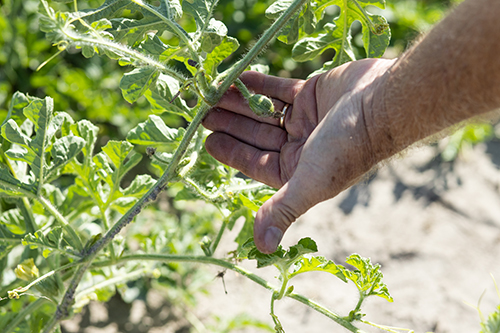By Clint Thompson
Sub-freezing temperatures impacted North Florida’s newly planted watermelons. But the impact was not as severe as it could have been, explains Bob Hochmuth, University of Florida Institute of Food and Agricultural Sciences (UF/IFAS) Regional Specialized Extension agent in Live Oak, Florida.

“There are a few fields that probably will have to be replanted or at least partially replanted. Then there’s other fields that came through in pretty good shape,” Hochmuth said. “There was probably about 1,000 acres that were covered. Most of that was either with Styrofoam cups or paper plates or other different methods of getting them covered. There was probably about 1,000 acres, and they all look good. I think we were one degree or a couple of hours away from a really bad situation. I think we escaped the worst-case scenario. The predicted temperatures of 28, plus or minus, ended up being 30, plus or minus.

“This particular event was more of a freeze than a frost. Most of the outer exposed leaves are the ones that got burned from the freezing temperatures. The plants are typically down in that hole inside the plastic. They’re more protected down inside that hole which is somewhat good news because the growing points can regenerate within that core of the plant. I would feel safe to say we averted disaster but did not come through it unscathed.”
Thousands of Plants at Risk
Hochmuth estimated that about 5,000 acres of the 7,000 acres normally produced in the Suwannee Valley were already planted. Ideal weather conditions favored early plantings for growers, who started in late February. The crop, though, was vulnerable to this weekend’s freeze event.
“The high prices early in the season for the watermelons drives growers to get started really early. When we had hot conditions and if the plants were available, then they looked at that point in time as far as they could see into the future like it was a good strategy,” Hochmuth said. “March in North Florida is always tricky. The combination of having the availability of the plants ready to go and the demand, that pushes them to plant as early as they can.”









